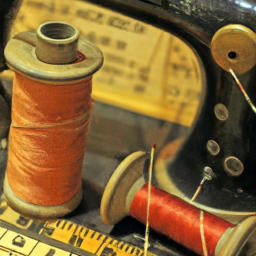
The History of Chain Stitch
Chain stitching is an ancient sewing technique that has been used for centuries to create beautiful and durable stitches. With its rich history dating back to ancient times, this stitching method has played a significant role in the development of various crafts and industries.
Origins
The origins of chain stitching can be traced back to the early civilizations, with evidence of its usage found in ancient Egyptian and Chinese cultures. It was primarily used for embroidering intricate designs on garments and textiles. Chain stitch was also employed in creating decorative motifs on ceremonial garments, flags, and tapestries.
The technique involves looping the thread in a chain-like pattern, hence the name. It produces a distinctive appearance with a series of interlocking loops on the fabric’s surface.
Advancements in Industrial Revolution
In the 19th century, the Industrial Revolution introduced significant advancements in the textile industry, including the mechanization of chain stitching. Inventors and entrepreneurs began developing machines to replicate this intricate stitch quickly.
One notable figure, Barthélemy Thimonnier, a French tailor, patented the first practical chain stitch sewing machine in 1830. This invention significantly impacted the garment industry, revolutionizing the manufacturing process and increasing production output.
Multiple Applications
As chain stitching gained popularity, it found its way into numerous applications beyond embroidery and garment making. The technique proved to be versatile and was utilized for other purposes.
Technical advancements enabled chain stitching to be employed in the production of carpets, upholstery, and various heavy-duty textiles. Its ability to create strong and secure seams made it suitable for items that required durability and strength.
Modern Usage
Today, chain stitching remains widely used in the fashion industry, particularly in denim production. Many denim enthusiasts admire the beautiful and authentic chain stitch hems found on high-quality jeans.
It has also found a place in contemporary art and craft, with artists exploring chain stitching to create unique and intricate designs on fabric, canvas, and even paper.
In Conclusion
The history of chain stitch is a testament to the enduring significance and versatility of this sewing technique. From ancient civilizations to the industrial revolution and the modern age, chain stitching has played a vital role in various industries, from textiles to fashion and beyond. Its artistic appeal and strength have stood the test of time, ensuring its continued presence in the world of sewing and craftsmanship.




